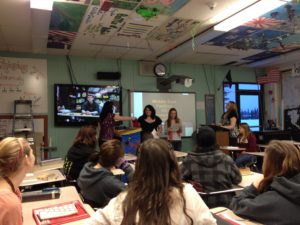This blog post written by:
Dr. Jolly T. Holden
USDLA Chair Emeritus
Advisory Board Chair
“I do not know any innovation upon existing methods more radical and revolutionary than this”
Although this quote sounds as if it were referring to a new technological breakthrough, in reality, this profound statement was uttered by the Reverend Joseph H. Odell, D. D. (1910) in his address titled “The New Era in Education: A Study of the Psychology of Correspondence Methods of Instruction” delivered in November of 1910 at the dedication of the instruction building of the International Correspondence Schools in Scranton Pennsylvania.
Fast forward a 106 years, and the above statement would be applicable today. In fact, it could accompany the marketing of any new and innovative technology used to deliver instruction today. So when I received my weekly Chief Learning Officer newsletter announcing “Why More Enterprise Companies are Adopting Virtual Instructor-Led Training over Traditional Classroom Training”, I viewed it with a little skepticism. What was this new technology that touted virtual training as being one of the most effective ‘new’ ways to deliver high-impact learning programs to a global audience…the benefits of this training delivery method includes lower delivery costs, broader student reach, and higher knowledge retention.”
The attributes of this new instructional delivery medium integrated a visual component (PowerPoint) with live [instructor-led] audio where the students can interact via a conference phone bridge, or by typing in a text response into a chat box. Not to keep you in suspense any longer, the announcement was about a web conferencing solution. Hmmm…seems to me I recall a similar application of the same concept (albeit different technology) used 30 years ago. This legacy solution was called audiographics, and integrated text/images delivered via a computer tablet and/or the use of an electronic whiteboard and a POTs (plain old telephone) phone bridge.
Sound familiar? Same idea, new wrapper…which ironically, uses the same [old as in legacy] phone lines as does the web conferencing solution of today but digitally! Furthermore, the concept of integrating live [instructor-led] video into a distance learning solution was practiced well over 3 decades ago where it was called Instructional TV (ITV)/Video Teletraining (VTT) and delivered via satellite or video teleconferencing (VTC)—both still in use today, albeit vastly improved.
That said, web conferencing is a very efficient solution since it leverages the ubiquitousness of the internet, and some say easier to use (a debatable point), but it’s still the same idea wrapped in a newer technology. The point is this: there will always be newer technologies that can delivery instruction more efficiently, but when it comes to instructional media, it’s the message that counts, not the technology. This point was made years ago, and is still appropriate today:
“The best current evidence is that media are mere vehicles that deliver instruction but do not influence student achievement any more than the truck that delivers our groceries causes changes in nutrition… only the content of the vehicle can influence achievement”
Richard Clark, Review of Educational Research Journal, 1993
So it all comes down to this—is any medium used to delivery instruction as effective as the traditional classroom? Consider this–one element of the traditional classroom that cannot be emulated is least technological component: The live instructor. It’s no wonder new and innovative instructional technologies want to emulate the traditional instructor-led classroom—the one element that makes both effective is the instructor. So why is the traditional classroom preferred, and why won’t it go away anytime soon? There are a number of reasons, but perhaps it comes down to simply the human dynamics of learning…we are a gregarious species that embraces human interaction and presence.
Check out these upcoming USDLA events:
USDLA 2017 National Conference, April 30 – May 3, 2017 in Indianapolis, IN
The USDLA 2017 National Conference is the premier event for professionals in the distance learning industry. This year’s conference celebrates USDLA’s 30th year and promises to deliver an action-packed agenda that will bring together distance learning practitioners from across the country and around the world.
Submit an Award Nomination Today!!!
The United States Distance Learning Association, the nation’s premier distance learning association since 1987 presents its NEWLY REVISED International Distance Learning Awards Program, the premier awards for the distance learning industry.
About United States Distance Learning Association (USDLA)
The United States Distance Learning Association (USDLA) is a non-profit association formed in 1987 with headquarters in Boston, Massachusetts. The association reaches 20,000 people globally with sponsors and members operating in and influencing 46% of the $913 billion dollar U.S. education and training market. USDLA promotes the development and application of distance learning for education and training and serves the needs of the distance learning community by providing advocacy, information, networking and opportunity. Distance learning and training constituencies served include pre-k-12 education, higher and continuing education, home schooling as well as business, corporate, military, government and telehealth markets.





